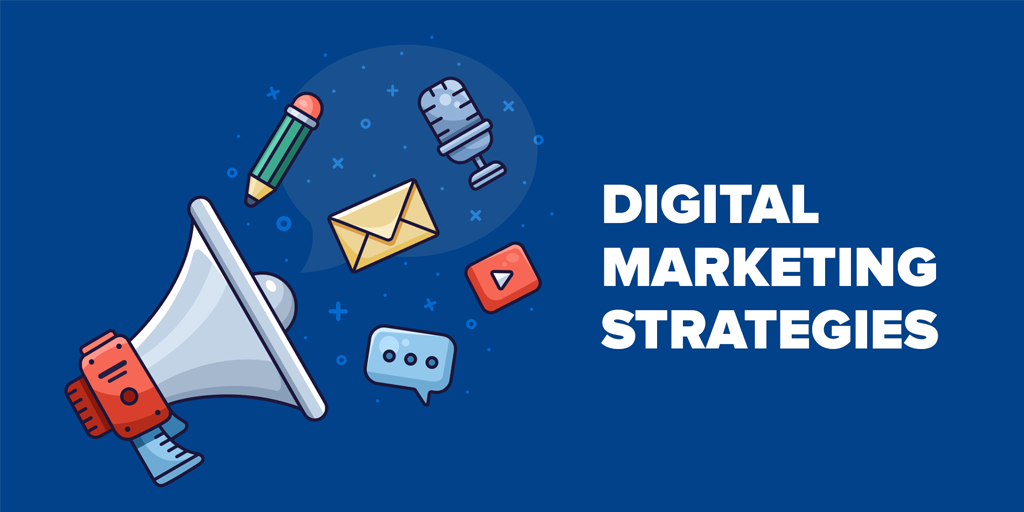
Develop a Leading Digital Marketing Strategy: A Step by Step Guide
Digital marketing is something whose face is ever-changing, and businesses are exploiting ways through which they can grow themselves in such ways that attract their target audience most. A robust digital marketing strategy is much more than blast branding or self-promotionof your product/ services instead of wholistic approach that fosters forms itself in every touchpoint of customer’s journey. Here’s a step-by-step guide on how to develop a great digital marketing strategy that could enhance and build your brand online; and eventually make those leads satisfied customers.
1. Know Your Audience
a. Know Your Target Market:
Find out and understand who your customers are; and most importantly, how they behave, like and dislike and what their pain points are. Google Analytics and social media analytics; as well as conducting customer surveys will assist you with your data.
b. Buyer Personas:
Create comprehensive personas of your major customers.profile includes demographic data, interests as well as behavioral patterns, to more accurately focus your marketing effort.
c. Customer Journey:
To appreciate the different stages that your audience undergoes before any purchase, there is a need to understand the customer journey.
2. Well-defined Objectives and Goals:
a. Define SMART Goals:
Your goals must be Specific, Measurable, Achievable, Relevant, and Time-bound. For instance, “To increase website traffic by 20% in the next quarter.
b. Align Goals with Business Objectives:
Digital marketing goals must be adjusted towards your overall business objective. Whether the goal is brand awareness, leads, or sales-driven must be kept in focal point.
3. Proper Digital Marketing Channels
a. Content Marketing:
Create useful content in the form of blogs, videos, whitepapers as well as infographics that address the pain points and meet the interests of your audience.
Search Engine Optimization – SEO:
Seamlessly optimize your content and website in order to rank higher in search engine result pages SERPs. People searching for what you have to offer will then easily discover your business.
c. Pay-Per-Click – PPC Advertising:
Spend on PPC campaigns. Instantly gain traffic from search engines like Google and social media platforms among others.
d. Social Media Marketing:
Utilize those social medial platforms that have the most fitting resonance with your target market. For example, LinkedIn is ideal for B2B, and Instagram is ideal for a lifestyle brand. Active engagements or interactions with the audience should be ensured.
e. Email Marketing:
Personalised email campaigns shall be developed to nurture leads so that your brand remains at the top-of-moment.
4. Integrate and Optimize Across Channels
a. Cross-Channel Marketing:
Ensure that all marketing channels are integrated and shall portray a consistent message in such a manner that a higher customer experience can be delivered.
b. Utilize Automation Tools:
Utilize marketing automation tools to automate campaigns from email marketing to social media posts.
c. Run A/B Testing:
Run regular testing of different aspects in marketing campaigns to see what works and optimize against results obtained.
5. Utilize Data and Analytics
a. Performance Monitoring:
Utilize tools like Google Analytics and SEMrush to track performances of marketing strategies and gain insights.
a. Track and Measure:
Monitor ROI for each marketing channel that is identified to yield the maximum return and then allocate resources.
b. Measure ROI:
Calculate ROI for each of these channels to yield the maximum return and allocate resources.
c. Be Agile:
It should be able to pivot or change course as required by the data or changing market conditions in its strategy.
6. Stay Current with the Newest Trends and Technologies
a. Keep Learning:
Digital Marketing is a dynamic field. One should remain updated about the latest trends, updates, and technologies that may affect your strategy.
b. Attend Webinars and Workshops:
These are platforms where one can learn new skills and also network with other markers.
c. Experiment with New Tactics:
Do not fear experimenting with new trends as long as they align with your business goals and audience inclination.
7. Foster Good Customer Relationships
a. Engage on a Constant Basis; Constantly engaging on social media and other avenues helps in developing and nurturing a relationship with your audience
b. Be Good at Providing Service After Sale ; All digital channels are to be used for offering support and speedy redressal of problems. Good service can help in building an individual into the repeat customer
c. Ask for Feedback; the Actively seek the feedback of the customers and act on those that are doable. This shows that you value the contribution of the customers and are eagerly interested in bringing improvement.
Conclusion
Effective strategy-making for digital marketing requires a properly set plan and execution with a continuous process of optimization. Only by defining your audience, specifying objectives, selecting correct channels, and using appropriate data can one concoct a strategy that will meet all business goals and even exceed them. Remember that adaptability is the key to success when it comes to digital marketing, amidst proactive engagement with the target market.
